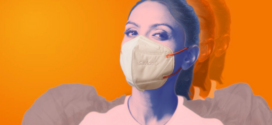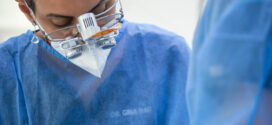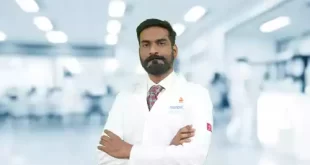Introduction
Respiratory syncytial virus, or RSV, is one of the most common viruses causing respiratory infection across the world. Many people recover in a week or two with mild, cold-like symptoms but the disease can be severe in infants, elderly populations, and certain high-risk groups.
Mode of spread
RSV is highly contagious. It spreads through droplets when an infected person coughs or sneezes. The virus enters the body when an individual inhales air containing the infected droplets. It can also be spread by contact with a contaminated surface. RSV now accounts for 14% of all influenza-like illnesses (ILI) across the country. RSV often occurs in yearly outbreaks in communities, classrooms, and childcare centres. The infection is more common in early spring and winter months. RSV can affect a person of any age but causes the most problems for infants and the elderly. Also, babies born prematurely or with diseases of the heart, lung, or immune system are at increased risk for more severe illness.
Common symptoms
Symptoms start about 2 to 5 days after contact with the virus. The early phase of RSV in babies and young children is often mild, like the common cold. In younger children, the illness may cause inflammation in the airways (bronchiolitis) and lungs (pneumonia) causing more severe illness.
The most common symptoms of RSV include:
- Fever
- Runny nose
- Sore throat
- Cough
- Difficulty in feeding
- Wheezing
- Breathlessness (breathing faster than usual, or increased work of breathing)
- Short periods without breathing (apnea)
- Turning blue around the lips and fingertips
The symptoms of RSV can however mimic many other respiratory viral infections. The child needs to be seen by a Paediatrician if any worrying symptoms like high temperatures, severe cough, poor feeding, or breathing difficulties, drowsiness etc. are seen.
Diagnosis of RSV infection
The diagnosis is based on the above symptoms and specific tests. There are now tests available (PCR tests) to confirm the diagnosis of RSV infection as well as other common viruses. These involve taking a swab from the nose similar to the COVID testing.
Treatment will depend on the child’s symptoms, age, and general health. Antibiotics are not effective against RSV and other viruses that cause common cold and flu-like symptoms. Specific treatments using drugs like Ribavirin are indicated only in selected groups of patients. In the remaining patients, treatment is mainly symptomatic and supportive.
This includes ensuring that the child receives adequate fluids orally. Paracetamol might be given for fever. Sick patients might require hospital admission and additional treatments like intravenous (IV) fluids, oxygen, and nebulization. Extremely sick patients might require Intensive care unit (ICU) admission and breathing support using a breathing machine (ventilator).
Prevention
RSV vaccination is available for the elderly (above 60 years) and at-risk newborn babies in some countries. However, there are some general measures that can be taken to reduce the risk of infection including:
- Encouraging breastfeeding.
- Preventing contact with sick people.
- General hygienic measures like the use of masks, sanitizers, hand hygiene etc.
- Sick people should avoid going to school, work, and other public places.
- Sick people should cover their mouths when coughing or sneezing.
These measures are especially important in the above-mentioned high-risk groups during the RSV season.
Dr. Srinivas Jakka, Senior Consultant Paediatrician and Pulmonologist,
Ankura Hospital for Women and Children
 Newspatrolling.com News cum Content Syndication Portal Online
Newspatrolling.com News cum Content Syndication Portal Online





